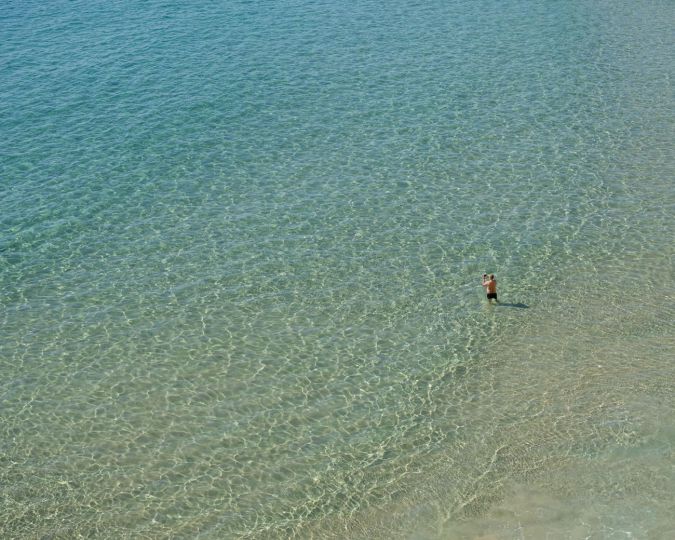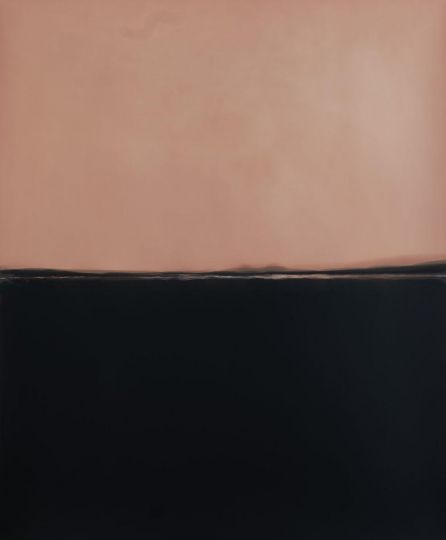An opportunity, two in fact, to deepen our knowledge of the work by this author, who shed new light on the landscape, the people who inhabit it and the space of the world. The occasion, then, is two exhibitions dedicated to him (as well as two books), which are being held almost simultaneously in Parma and Milan and which, in these years, when the dematerialisation of the image seems to reign, make it possible to appreciate photographs as physical objects to be observed and from which to start an investigation into the creative idea, the subjects, the paths conceived by Giovanni Chiaramonte.
The Ape Parma Museo, the cultural and exhibition centre of the Fondazione Monteparma, is hosting the Giovanni Chiaramonte. Fotografia come misura del mondo exhibition, with around 400 photographs: this retrospective aims to give voice to the complex artistic experience of Chiaramonte (who passed away last year), highlighting his commitment to knowing the world. Chiaramonte’s work is characterised by a concern to capture the intrinsic order of things and the world, by placing elements in perspective and within a measurable space.
It is the intimate knowledge of the rules of vision and the awareness of breaking them, when and if necessary, that highlights the symbols, traditions and stories inherent in his photographs. The coexistence of a figurative dimension, a conceptual one and a spiritual quest is a sign of his search for the essence of things, revealing ‘the light of the divine in the world’.
The exhibition is curated by Arturo Carlo Quintavalle, who in 1968 founded the CSAC – Centro Studi e Archivio della Comunicazione of the Università di Parma, with a section dedicated to photography, and who brought Chiaramonte closer to the city of Parma. The works on display, representative of the majority of the author’s photographic production, come both from the Fondo Chiaramonte housed by the CSAC and from photographs donated by the author’s sons to the Fondazione Monteparma.
The exhibition is accompanied by the monograph Giovanni Chiaramonte (https://www.electa.it/en/product/giovanni-chiaramonte-3/ ) by Arturo Carlo Quintavalle. It also includes an essay by Paolo Barbaro on Chiaramonte’s interest in architecture as a photographer. The volume is part of the new monograph series Electaphoto, dedicated to photographers and photography: produced in collaboration with the Giovanni Chiaramonte Archives, presents for the first time all the cycles of his photography, from the earliest and least known works of the seventies and eighties to the most famous series on the Italian, European and American landscape, including his works on Central America, mostly unpublished.
In Milan, on the other hand, the exhibition is at the Museo Diocesano Carlo Maria Martini, a quite interesting place, where traces of an ancient past can be seen. The museum is located in one of the cloisters of the Basilica of Sant’Eustorgio, which houses an ancient Roman sarcophagus with a comet star on it: according to tradition, it was that of the Three Wise Men. In this context, the exhibition Giovanni Chiaramonte Realismo infinito, curated by Corrado Benigni, traces two fundamental decades of the artist’s career, from 1980 to the early 2000s.
The exhibition is made up of 40 images, grouped into three sections-chapters (Italy, Europe, Americas) that trace Chiaramonte’s research into the different ways of perceiving the landscape and the urban view, which have always been at the centre of his photography and theoretical reflection. An exploration that unfolds along the focal points of Western history and identity, starting with Italy, whose landscape, bearing the signs of a long stratification of cultures and customs, becomes the framework for reading the West, its character and its destiny.
Like a pilgrimage that touches Athens and Rome, passes through Berlin and reaches the Bosphorus and Jerusalem, the photographer has portrayed the vestiges of the old continent in search of the origins of our civilisation. The journey continues to the United States and Central America, with a theoretical reflection on the act of photographing, the nature of the object represented and the act of seeing itself. For Chiaramonte there is no predetermined point of view for observing the landscape. Instead, he thinks it’s a place susceptible to different interpretations that follow the dynamics of individual experience.
The title, Infinite Realism, refers to the horizon line, a central element of landscape photography, as well as to the multiple possibilities of representation that each scenery contains.
“Giovanni Chiaramonte has always observed reality by accepting it in its entirety. This is why his photographs still speak to our hearts today, helping us to see in reality the signs of something that goes beyond reality itself”, Nadia Righi, director of the Diocesan Museum, says. The exhibition also includes a section dedicated to Giovanni Chiaramonte’s contribution to the production of the 2011 Nuovo Evangeliario Ambrosiano.
The exhibition is accompanied by the monograph Giovanni Chiaramonte. Realismo infinito, (https://www.electa.it/en/product/giovanni-chiaramonte-2/ ) was first published in 2022 (the photographer’s last first-person work) and is now republished by Electa. A fundamental text for understanding the contribution by Chiaramonte to the poetic-conceptual redefinition of the image of the contemporary landscape. Chiaramonte’s ‘infinite realism’ is not just a photographic style, but a way of thinking and imagining the world in its duration and continuity.
Giovanni Chiaramonte. Fotografia come misura del mondo
From November 10, 2024 until February 9, 2025
APE Parma Museo
strada Farini 32/a
43121, Parma
https://www.apeparmamuseo.it/
Giovanni Chiaramonte. Realismo infinito
From November 16, 2024 until February 9, 2025
Museo Diocesano Carlo Maria Martini
Piazza Sant’Eustorgio 3
20123 Milano
https://chiostrisanteustorgio.it/
















